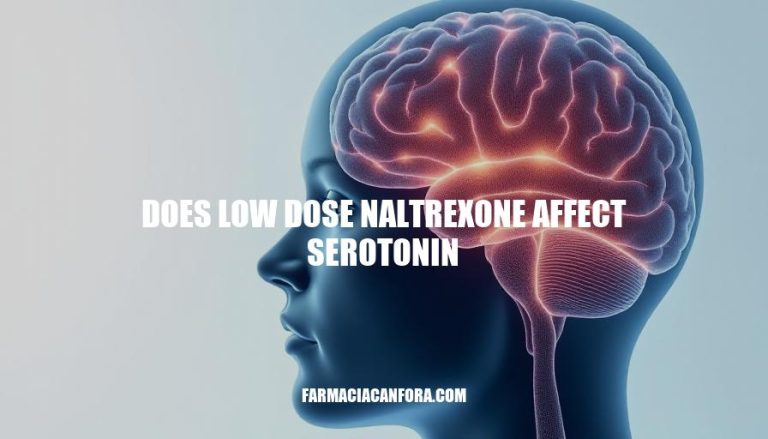


Low dose naltrexone is a medication that’s being looked at for its potential benefits. It was originally made to help with opioid addiction, but now people are exploring if it can also help with chronic pain, autoimmune diseases, and inflammation. We’re going to look into whether low dose naltrexone affects serotonin levels in the brain.
Low dose naltrexone (LDN) operates through transient blockade of opioid receptors, specifically μ, κ, and δ receptors. This blockade is brief, lasting only a few hours, which paradoxically leads to an increase in endogenous opioids like endorphins and enkephalins. This increase is due to a positive feedback mechanism that enhances the production of these peptides.
The elevated levels of endorphins and enkephalins can modulate immune responses, reduce inflammation, and promote healing.
Regarding serotonin pathways, LDN’s interaction is less direct but still significant. The increase in endorphins and enkephalins can influence serotonin levels indirectly. Endorphins and enkephalins have been shown to regulate mood and emotional states, which are closely linked to serotonin activity.
Additionally, LDN’s anti-inflammatory properties may reduce neuroinflammation, which can positively affect serotonin pathways and improve mood disorders.
Studies investigating LDN’s effects on serotonin levels are limited, but there is evidence suggesting its potential benefits in treating depression and other mood disorders. For instance, a randomized-controlled trial examined the augmentation of depression treatment with LDN and found improvements in Hamilton Depression Rating Scale (HAMD) scores. This suggests that LDN may indirectly enhance serotonin function through its effects on endorphins and enkephalins.
In summary, LDN’s mechanisms of action involve transient opioid receptor blockade leading to increased endorphins and enkephalins, which can modulate serotonin pathways and improve mood disorders.
Further research is needed to fully understand these interactions and their clinical implications.
Low dose naltrexone (LDN) has been found to have indirect effects on serotonin levels in the brain, primarily through its influence on endorphins and enkephalins. The transient blockade of opioid receptors by LDN leads to an increase in these peptides, which can modulate immune responses, reduce inflammation, and promote healing.
Additionally, LDN’s anti-inflammatory properties may positively affect serotonin pathways and improve mood disorders. Studies suggest that LDN may indirectly enhance serotonin function through its effects on endorphins and enkephalins, with potential benefits in treating depression and other mood disorders.
A randomized-controlled trial found improvements in Hamilton Depression Rating Scale (HAMD) scores when LDN was used to augment depression treatment. While the evidence is limited, it suggests that LDN may have a positive impact on serotonin levels and related mood disorders.
Further research is needed to fully understand these interactions and their clinical implications, but the current findings indicate potential benefits for patients with chronic pain, autoimmune diseases, and inflammation, as well as those with depression and other mood disorders. In terms of clinical practice, LDN may be a useful adjunctive treatment for patients with mood disorders, particularly when used in conjunction with traditional antidepressant therapies.
However, more research is needed to confirm its efficacy and optimal dosing regimens.